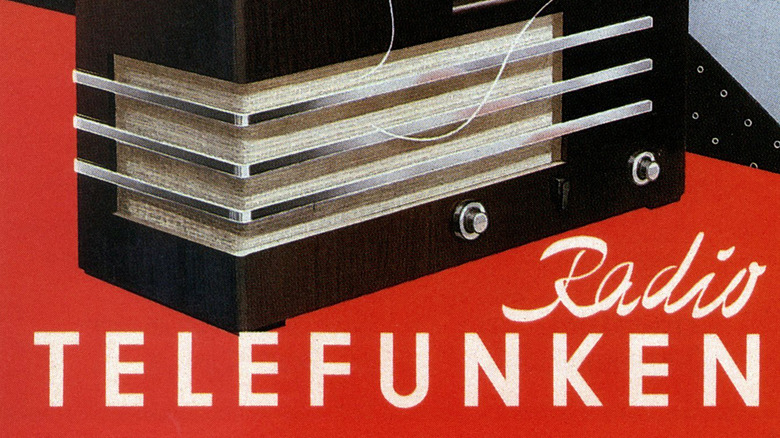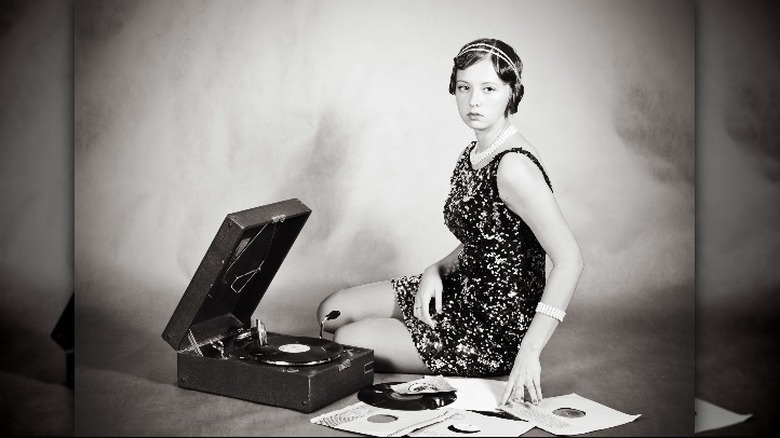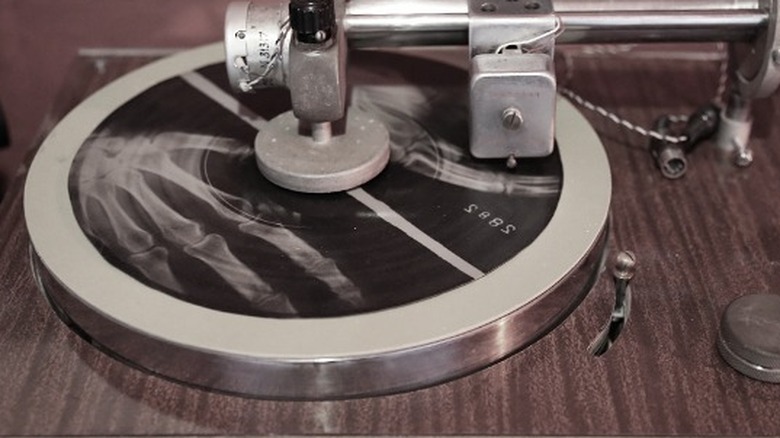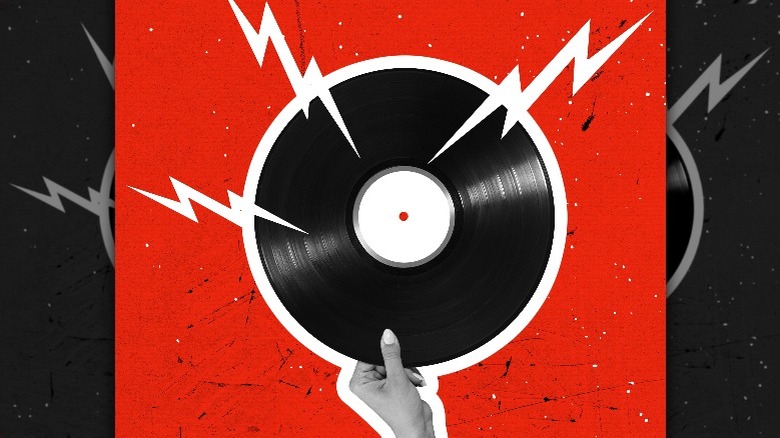How X-Rays Became The Backbone Of Bootleg Music In 1950s Russia
One fateful day in the 1940s, a man wandered into a Leningrad photography shop run by a style-savvy ex-soldier named Stanislav Philo. Upon entering the store, he was utterly startled to hear the sweet sound of tango music. It was the Soviet Union, and tango music, like all music the government deemed licentious, was outlawed. But the man was a music enthusiast, and it was the era of the "stilyagi" (or "style-hunters," according to Vice), a trendy subculture of apolitical, disaffected ex-soldiers and cigarette-smoking Yankophiles — and forbidden music was cool. Determined, the man approached Philo to ask if he could buy a copy of the record. Philo, of course, told him no — but, ever-the-Russian, he then replied, "[But] come back when we close."
The man did, in fact, return that evening, according to Stephen Coates, narrating the story of "X-ray audio" on the podcast "The Real Tuesday Weld," and he was ready to score himself some top-tier contraband records smuggled from abroad. Instead of a record, however, Philo picked up a dark, translucent sheet emblazoned with bones — it looked like an X-ray of a stranger's rib cage — cut into the shape of a circle. Was it an X-ray or a record? It was both.
Stanislav Philo's Telefunken
Stanislov Philo, it turned out, was a bootlegger. Like many young men in the 1940s, he was an ex-soldier, and like many Soviet ex-soldiers, he had kept souvenirs of his time in Germany. According to "Cutting the Bone," among Philo's war-won trophies was a Telefunken recording lathe: a kind of reverse gramophone used for creating and duplicating records. If a Russian knew the right people, one could obtain a copy of a foreign record smuggled in from a Soviet satellite country (like Hungary, as Fast Company explained), set it on the recording lathe, and make oneself a copy.
Yet if the solution to censorship was simply a recording lathe, Soviet youth would already be dancing the tango. Unfortunately, recording lathes were made to copy records onto blank vinyl, which required lacquer and shellac. Not being born yesterday, USSR propaganda officials had ensured these industries were government-controlled, as Dazed Digital noted. Only the state-run record label, Melodiya, would be able to reliably obtain the materials needed by such a machine.
The Eastern front had gifted Philo a solution for this too: he had acquired some German literature explaining how to turn virtually any material into a record using a recording lathe (via X-Ray Audio Project). One could use aluminum, abandoned street signs, or virtually anything — but what worked best were X-rays.
Reinvention of the Tango — A Black Market is Born
According Coates in "A Short History of Bone," once word got about Philo's recording lathe and X-ray method, his shop started to get busy after-hours. Leningrad music lovers and underground culture enthusiasts came to witness the technique, many of whom then bootlegged their own copies of the recording lathe. "Culture brokers" began copying their own contraband records onto X-rays, inscribing them with the grooves of old Russian classics and new Western hits — then, of course, unloading them on the black market.
X-rays were relatively easy to obtain: the USSR required hospitals to dispose of used X-rays within one year. (It was an effort to prevent hospital fires, as X-rays in this era were reactive and highly flammable, per WPR.) X-rays were also soft enough to easily engrave, and durable enough to retain their ridges. "Bone Music" was born.
Leningrad's status as a port city also gave bootleggers access to a steady influx of illegally imported foreign records to duplicate for sale, according to "A Short History of Bone," and it soon became the epicenter of the underground industry. Bootleggers would linger outside the city's hospitals to chat up off-duty workers, exchange vodka or small sums of money (according to Coates on WPR), then haul off stacks of discarded X-rays to engrave with grooves to spell out the sweet rhythms of their state-forbidden music.
From Leningrad to Moscow, the emerging X-ray underground would circumvent censorship in the Soviet Union for over 20 years.
Saxophones, Static, and Life Under Stalin
Rock 'n' roll was tasted, and found tantalizing. Mambo music rippled over skin at 78 BPM (via X-Ray Audio) with its curling cascade, innervating the spirit with its rhythm — foreign; odd; occasionally unlistenable and at times, more static than sound (per NPR). To the Soviets of the 1950s, that didn't matter at all.
The imperfections were considered part of the experience. In an interview with The Guardian in 2015, Coates' colleague and fellow X-Ray Audio contributor Aleks Kolkowski explained what lovers of X-ray music referred to as "listening through sound."
"Humans like to hear things that sound like recordings," he explained, "but the imperfections — the hisses and crackles — make us listen a bit harder." As Coates told WFDD, "...[T]alking to people who bought these records when they were young — even the tiniest thread of melody, of this forbidden sound... it led to a different world."
Skeletons
A taste of that "forbidden world" was costly. Under Stalin, a number of Russian bootleggers and self-styled "culture traders" (including members of The Golden Dog gang, per Dazed Digital) were sent to the gulag. "[T]his was a time when music mattered so much that people would risk that," according to Coates on WFDD. "They would risk public sanction; they would risk imprisonment."
The barrenness of Stalin's artistic world left ample blank space for creative rebellion, and even a visceral hunger for it. Rudy Fuchs, according to The Guardian, grew up under post-Stalin censorship — as a college student, he sold his own blood to afford a recording lathe. Infatuated by forbidden music and enthralled by the underground X-ray economy, Fuchs became a bootlegger — for which he spent three years in a Soviet prison. The day he got out, he set up his recording lathe and started bootlegging again — he felt "compelled" (via The Guardian). It transcended the political or cultural — it was identity, belonging, and a lifeline to the noises of the outside world: sometimes it's just static, but you listen through the sound.




